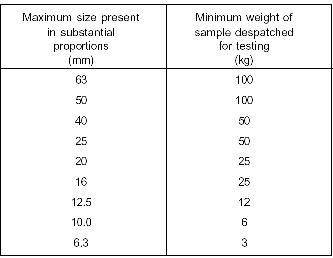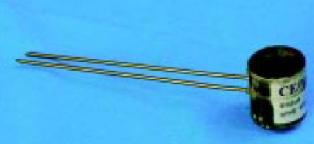VEE-BEE TEST
To determine the workability of fresh concrete by using a Vee-Bee consistometer as per IS: 1199 – 1959. The apparatus used is Vee-Bee consistometer.
Procedure to determine workability of fresh concrete by Vee-Bee consistometer.
Awarded as the best online publication by CIDC
VEE-BEE TEST
To determine the workability of fresh concrete by using a Vee-Bee consistometer as per IS: 1199 – 1959. The apparatus used is Vee-Bee consistometer.
Procedure to determine workability of fresh concrete by Vee-Bee consistometer.
COMPACTING FACTOR
Compacting factor of fresh concrete is done to determine the workability of fresh concrete by compacting factor test as per IS: 1199 – 1959. The apparatus used is Compacting factor apparatus.
Procedure to determine workability of fresh concrete by compacting factor test.
i) The sample of concrete is placed in the upper hopper up to the brim.
WORKABILITY
Slump test is used to determine the workability of fresh concrete. Slump test as per IS: 1199 – 1959 is followed.The apparatus used for doing slump test are Slump cone and Tamping rod.
Procedure to determine workability of fresh concrete by slump test.
i) The internal surface of the mould is thoroughly cleaned and applied with a light coat of oil.
ii) The mould is placed on a smooth, horizontal, rigid and nonabsorbent surface.
iii) The mould is then filled in four layers with freshly mixed concrete, each approximately to one-fourth of the height of the mould.
AGGREGATE CRUSHING VALUE
This test helps to determine the aggregate crushing value of coarse aggregates as per IS: 2386 (Part IV) – 1963. The apparatus used is Cylindrical measure and plunger, Compression testing machine, IS Sieves of sizes – 12.5mm, 10mm and 2.36mm
AGGREGATE IMPACT VALUE
This test is done to determine the aggregate impact value of coarse aggregates as per IS: 2386 (Part IV) – 1963. The apparatus used for determining aggregate impact value of coarse aggregates is
Impact testing machine conforming to IS: 2386 (Part IV)- 1963,IS Sieves of sizes – 12.5mm, 10mm and 2.36mm, A cylindrical metal measure of 75mm dia. and 50mm depth, A tamping rod of 10mm circular cross section and 230mm length, rounded at one end and Oven.
Preparation of Sample
i) The test sample should conform to the following grading:
– Passing through 12.5mm IS Sieve – 100%
– Retention on 10mm IS Sieve – 100%
AGGREGATE ABRASION VALUE
This test helps to determine the abrasion value of coarse aggregates as per IS: 2386 (Part IV) – 1963.
The apparatus used in this test are Los Angles abrasion testing machine, IS Sieve of size – 1.7mm, Abrasive charge – 12 nos. cast iron or steel spheres approximately 48mm dia. and each weighing between 390 and 445g ensuring that the total weight of charge is 5000 +25g and Oven.
WATER ABSORPTION
This test helps to determine the water absorption of coarse aggregates as per IS: 2386 (Part III) – 1963. For this test a sample not less than 2000g should be used. The apparatus used for this test are :-
Wire basket – perforated, electroplated or plastic coated with wire hangers for suspending it from the balance, Water-tight container for suspending the basket, Dry soft absorbent cloth – 75cm x 45cm (2 nos.), Shallow tray of minimum 650 sq.cm area, Air-tight container of a capacity similar to the basket and Oven.
SIEVE ANALYSIS
Sieve analysis helps to determine the particle size distribution of the coarse and fine aggregates.This is done by sieving the aggregates as per IS: 2386 (Part I) – 1963. In this we use different sieves as standardized by the IS code and then pass aggregates through them and thus collect different sized particles left over different sieves.
The apparatus used are –
i) A set of IS Sieves of sizes – 80mm, 63mm, 50mm, 40mm,31.5mm, 25mm, 20mm, 16mm, 12.5mm, 10mm, 6.3mm,4.75mm, 3.35mm, 2.36mm, 1.18mm, 600µm, 300µm, 150µm and 75µm.
ii) Balance or scale with an accuracy to measure 0.1 percent of the weight of the test sample.
The weight of sample available should not be less than the weight given below:-

The sample for sieving should be prepared from the larger sample either by quartering or by means of a sample divider.
INITIAL AND FINAL SETTING TIME
We need to calculate the initial and final setting time as per IS: 4031 (Part 5) – 1988. To do so we need Vicat apparatus conforming to IS: 5513 – 1976, Balance, whose permissible variation at a load of 1000g should be +1.0g, Gauging trowel conforming to IS: 10086 – 1982.
Procedure to determine initial and final setting time of cement
i) Prepare a cement paste by gauging the cement with 0.85 times the water required to give a paste of standard consistency.
SOUNDNESS
Soundness of cement is determined by Le-Chatelier method as per IS: 4031 (Part 3) – 1988.
Apparatus – The apparatus for conducting the Le-Chatelier test should conform to IS: 5514 – 1969
Balance, whose permissible variation at a load of 1000g should be +1.0g and Water bath.

Procedure to determine soundness of cement